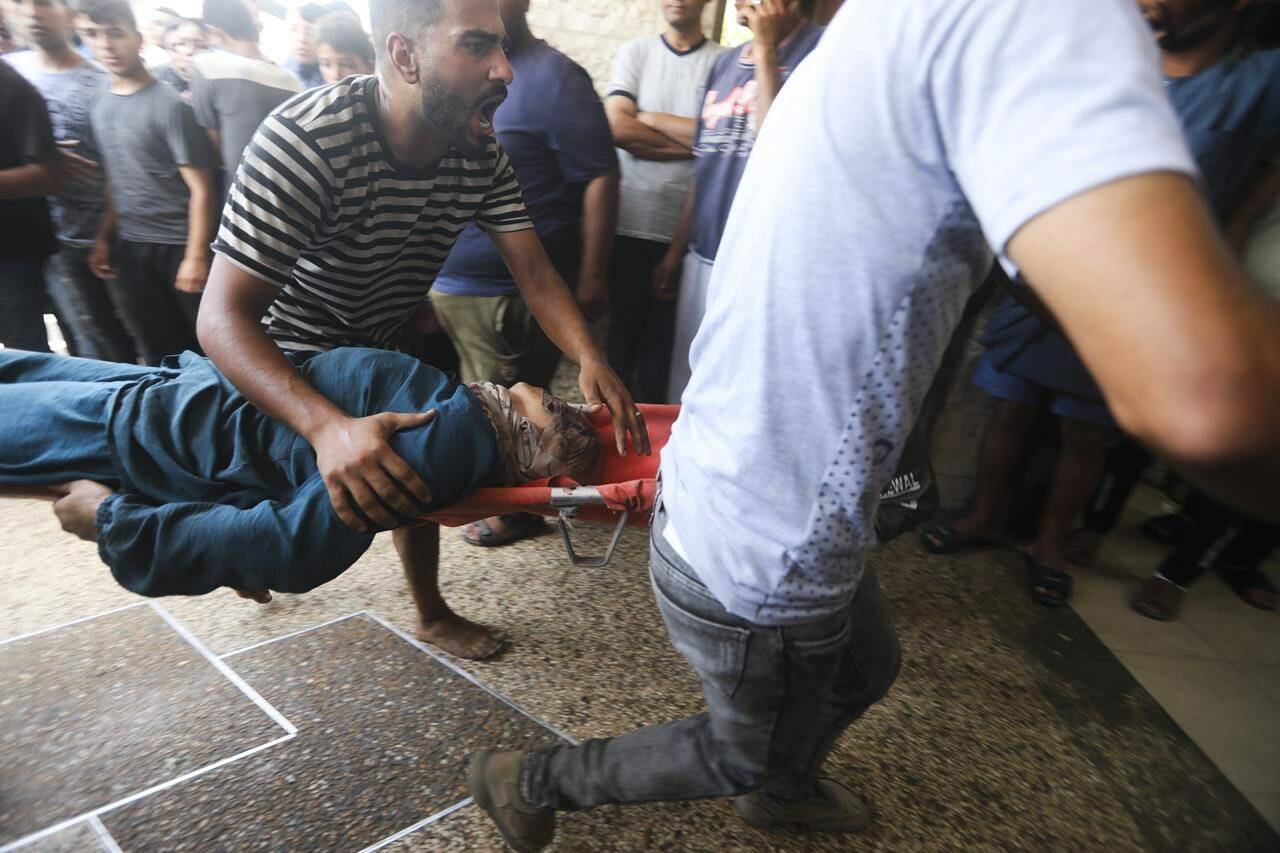At least 274 Palestinians including dozens of children were killed, and hundreds more were wounded, in the Israeli raid that rescued four hostages held by Hamas, Gaza’s Health Ministry said Sunday. The military said its forces came under heavy fire during the complex daytime operation deep inside the territory.
The killing of so many Palestinians, in a raid that Israelis celebrated as a stunning success because all four hostages were rescued alive, showed the heavy cost of such operations on top of the already soaring toll of the 8-month-long war ignited by Hamas’ Oct. 7 attack.
The operation deep into Nuseirat, a built-up refugee camp in central Gaza dating back to the 1948 Arab-Israeli war, was the largest rescue since Oct. 7, when Hamas and other militants stormed across the border, killing some 1,200 people, mostly civilians, and taking around 250 hostage.
Scores of hostages are believed to be held in densely populated areas or inside Hamas’ labyrinth of tunnels, making rescue attempts extremely complex and risky. A raid in February rescued two hostages while leaving 74 Palestinians dead.
Israel’s massive offensive has killed over 36,700 Palestinians, according to the health ministry, which does not differentiate between civilians and combatants in its counts. It said 64 children and 57 women were killed in the latest raid, and 153 children and 161 women were among the nearly 700 wounded.
SCENES OF HORROR AT GAZA HOSPITAL
In Gaza, medics described scenes of chaos after the raid. Overwhelmed hospitals were already struggling to treat the wounded from days of heavy Israeli strikes in the area.
“We had the gamut of war wounds, trauma wounds, from amputations to eviscerations to trauma, to TBIs (traumatic brain injuries), fractures and, obviously, big burns,” said Karin Huster of Doctors Without Borders, an international charity working in Al-Aqsa Martyrs Hospital.
“Kids completely grey or white from the shock, burnt, screaming for their parents. Many of them are not screaming because they are in shock.”
The Israeli military said it had attacked “threats to our forces in the area,” and that a special forces officer was killed in the rescue operation.
Israel’s military spokesman, Rear Adm. Daniel Hagari, told reporters Saturday that the hostages were held in two apartments about 200 meters (219 yards) apart. He said the forces moved in simultaneously on both. He said rescuers came under heavy fire as they moved out, including from gunmen firing rocket-propelled grenades. He said the military responded with heavy force, including from aircraft.
Israel’s Foreign Minister Israel Katz lashed out at critics of the operation in a post on X, saying “only Israel’s enemies complained about the casualties of Hamas terrorists and their accomplices.”
Inside Israel, local media have focused heavily on the Israeli toll, the hostages and military efforts with relatively little coverage of the situation for Palestinians inside Gaza.
‘MY BROTHER DIED OF GRIEF’
Israelis celebrated the return of Noa Argamani, 26; Almog Meir Jan, 22; Andrey Kozlov, 27; and Shlomi Ziv, 41.
Argamani was one of the most widely recognized hostages after being taken, like the three others, from a music festival. Her mother, Liora, who has late-stage brain cancer, had released a video pleading to see her daughter.
Argamani’s father told Army Radio the reunion with her mother “very difficult” as Liora was “just unable to express her feelings and could not say what she was really waiting to say to Noa.”
Meir Jan’s aunt, Dina, said his father had died on Friday, hours before the operation. “My brother died of grief,” she told Israel’s Kan public broadcaster.
Dr. Itai Pessach at Sheba Hospital, where the freed captives were being treated, said none had serious physical injuries and it would likely be days before they could be discharged. They have lost friends and family, and staff “have been assisting them in rebuilding the infrastructure of their life,” he told reporters.
About 120 hostages remain, with 43 pronounced dead, after about half were released in a weeklong cease-fire in November. Israeli troops have recovered the bodies of at least 16, according to the government. Survivors include about 15 women, two children under 5 and two men in their 80s.
But Hagari on Saturday acknowledged that the military can’t carry out operations to rescue everyone.
WHAT LIES AHEAD
The latest rescue has lifted spirits in Israel as divisions deepen over the best way to bring hostages home. Many Israelis urge Netanyahu to embrace a cease-fire deal U.S. President Joe Biden announced last month, but far-right allies threaten to collapse his government if he does. Hours after the hostage rescue, thousands of Israelis again gathered to protest the government and call for a deal.
Benny Gantz, a popular centrist member of Israel’s three-member War Cabinet who had threatened to resign from the government if it didn’t adopt a new plan by Saturday for the war, was set to speak later Sunday. Netanyahu on Saturday urged him not to step down.
U.S. Secretary of State Antony Blinken will return to the Middle East this week, seeking a breakthrough in cease-fire efforts. U.S. national security adviser Jake Sullivan told CNN that mediators Egypt and Qatar had not received official word from Hamas on the proposed deal. In a separate interview with CBS, Sullivan didn’t say whether Biden would meet Netanyahu when he comes to Washington next month to address Congress.
International pressure is mounting on Israel to limit civilian bloodshed in its war in Gaza. Palestinians also face widespread hunger because fighting and Israeli restrictions have largely cut off the flow of aid.
READ ALSO: Who are the 4 hostages rescued by Israeli forces from captivity in Gaza?
___
Wafaa Shurafa And Samy Magdy, The Associated Press

